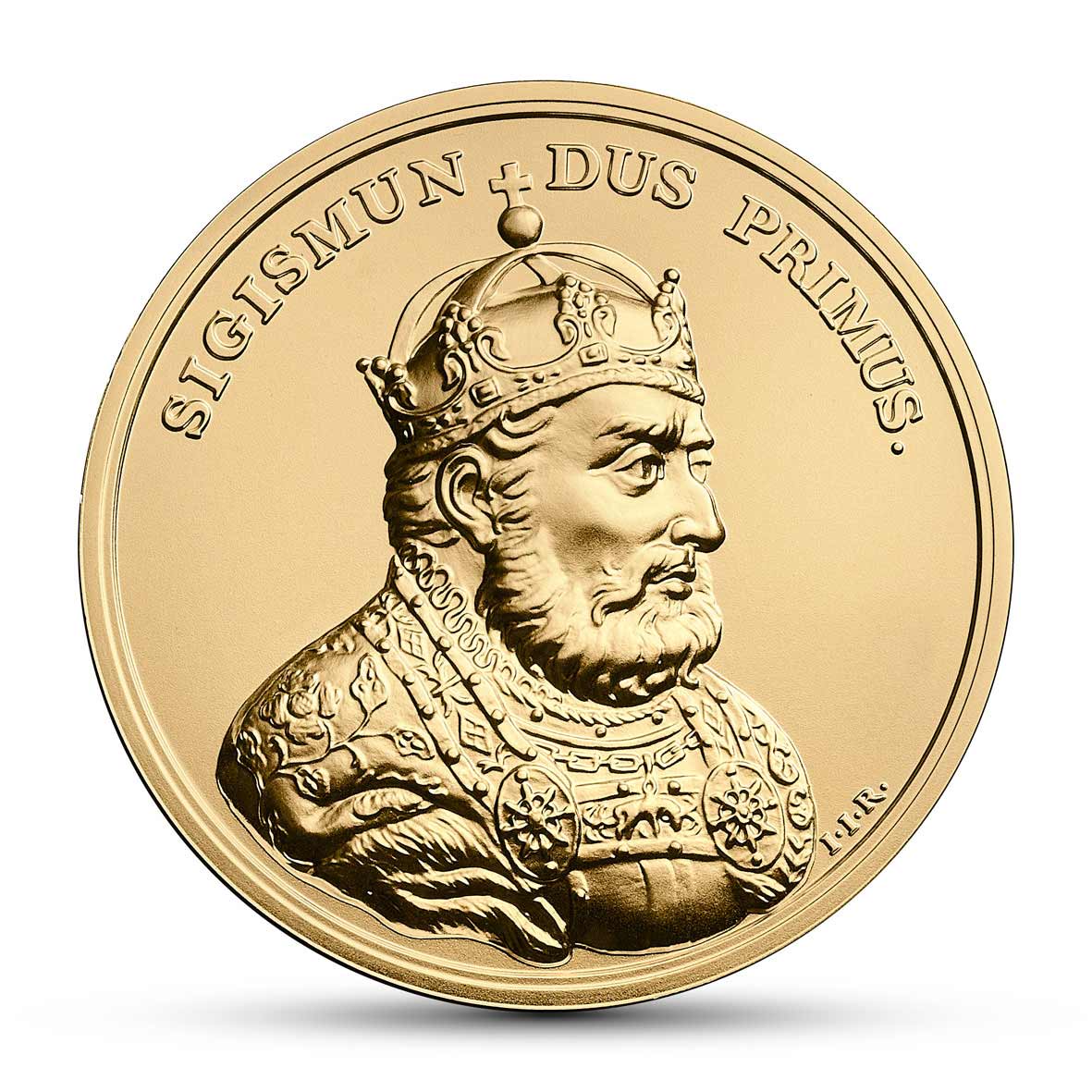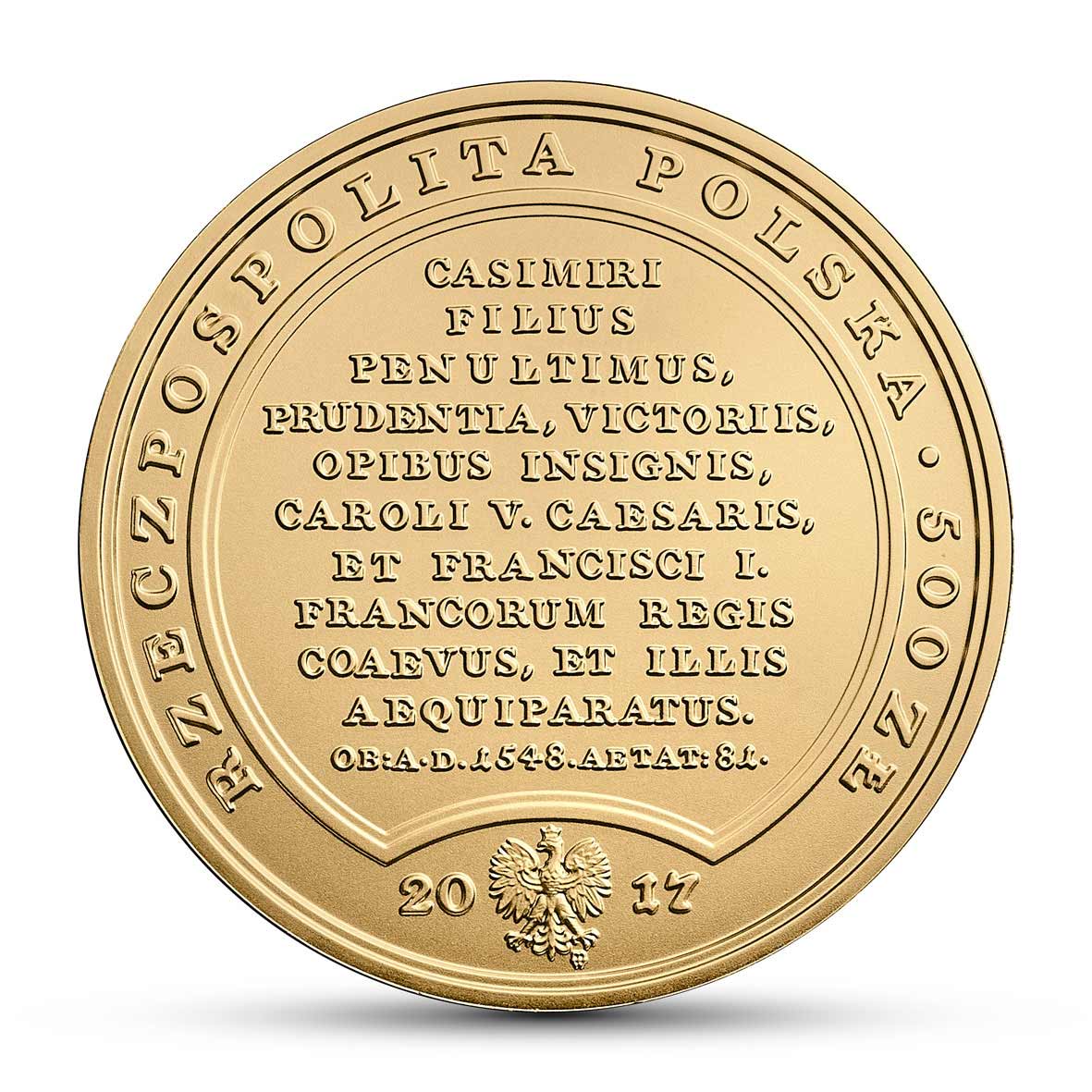Treasures of Stanislaw August hits the half way mark with its twelfth Polish ruler
Here is a coin series that epitomises classic numismatics for many people. Grounded in history and struck without gimmickry, Treasures of Stanislaw August is one of the best of its type being released today. Replicas of a series of medallions commissioned by Stanislaw August Poniatowski in the late eighteenth century, they were works of beauty back then and remain so today.
Initiated in 2013, the series will encompass the original 23 medals and add one depicting King Stanislaw himself, apparently realised in the same style. Starting with the royal line in 992, this twelfth coin brings us up to 1548 on our way to the final subject who passed away in 1795. The concept behind this series is to reproduce the medals as accurately as possible, even down to the diameter and they’ve done an admirable job to date. It’s amusing to think that even back then, old politics reared its ugly head. There are no subjects in this series between 1025 and 1291 because medieval kings from the Piast Dynasty weren’t particularly well thought of in the late 18th century.
Available in two ounces of gold or two ounces of silver, with identical designs (except for the denomination), each release is expertly designed to evoke the original, yet fulfill the criteria of being a modern coin as inconspicuously as possible. The reverse depicts the original portrait, with the obverse depicting a text quotation, often as in this case, a remembrance. Each is boxed with a certificate of authenticity
This is the first of two issues in this series for 2017, less than usual, and we’ve noticed another gentle increase in the mintage of the silver version to 6,000 units, the gold remaining at 600. Beautifully struck by the Mint of Poland, we love this series and it clearly has great appeal to those turned off by the more modern style of coin design. We have a full guide to the series to date, now in its fifth year and one well worth a look. This coin has been added to it to keep it up to date. The next coin will debut in December and feature Sigismund August, the king who ruled from 1548-1572.
MINTS DESCRIPTION
The twelfh coin in the series depicts Sigismund I, the ffh son of Casimir Jagiellon and Elisabeth of Austria. Sigismund became the Grand Duke of Lithuania and King of Poland in 1506. Following the coronation of his son in 1529, he was dubbed “the Elder”. A partisan of a peaceful solution to political conflicts, he enjoyed the respect of both his subjects and foreign rulers. His reign ushered Poland into its golden age – a period of economic and cultural prosperity.
The reverse of the coin depicts the bust of the king modelled on a medal designed afer a painting by Marcello Bacciarelli. The bust faces right, the king is wearing a crown and has a short beard over a ruff. He is clad in armour covered with a richly embroidered coat clipped with a decorative buckle and adorned with a jewelled Order of the Golden Fleece on a chain. This is the frst medal in a series struck by Jan Jakub Reichel, the new court medal minter of Stanisław August (his predecessor in this post, Jan Filip Holzhaeusser, died in 1792).
On the obverse of the coin we can read a slightly shortened version of the text engraved on the reverse of the medal (in translation): Casimir’s penultimate son, distinguished by sagacity, triumph and wealth, a contemporary and equal of Emperor Charles V and Francis I of France. Died AD 1548, aged 81, in the 42nd year of his reign, on 1 April.
Sigismund was born in 1467. He married Barbara Zapolya (1512) and, afer her death, Bona Sforza d’Aragona (1518). In 1499–1506 he held the title of Prince of Głogów. Elected King of Poland in December 1506, Sigismund was crowned in Kraków in January 1507. He reorganised and strengthened the Treasury and ensured increased Crown revenue from duty collection and the salt works. In 1515, he concluded an alliance with the Habsburgs. In 1526, the king incorporated the fefdom of Masovia into the Polish Crown. He carried out an election vivente rege of his son Sigismund Augustus in 1529, and soon aferwards established in Poland the election viritim (all noblemen being entitled to vote on the condition of presenting themselves at the election site).
As a result of wars fought in 1507–1508 and 1512–1522 (and despite the victory at Orsza in 1514), Lithuania lost Smoleńsk to Muscovy. Following the war with the Teutonic Order (1519–1520), in 1525 Sigismund accepted the liege homage from Albrecht Hohenzollern, the Prince of Prussia (previously the Grand Master of the Teutonic Order). The king modernized the monetary system and integrated the Prussian coin into it in 1526. Sigismund was a generous patron of Renaissance art and remodelled Wawel Castle. He died in 1548 and was buried in Kraków on Wawel Hill.
Marta Męclewska
SPECIFICATION
| NAME | 2017 STANISLAW AUGUST | 2017 STANISLAW AUGUST |
| DENOMINATION | 50 Zloty | 500 Zloty |
| COMPOSITION | 0.999 silver | 0.9999 gold |
| WEIGHT | 62.2 grams | 62.2 grams |
| DIAMETER | 45.00 mm | 45.00 mm |
| FINISH | Uncirculated | Uncirculated |
| MODIFICATIONS | None | None |
| MINTAGE | 6,000 | 500 |
| BOX / COA | Yes / Yes | Yes / Yes |







Leave A Comment